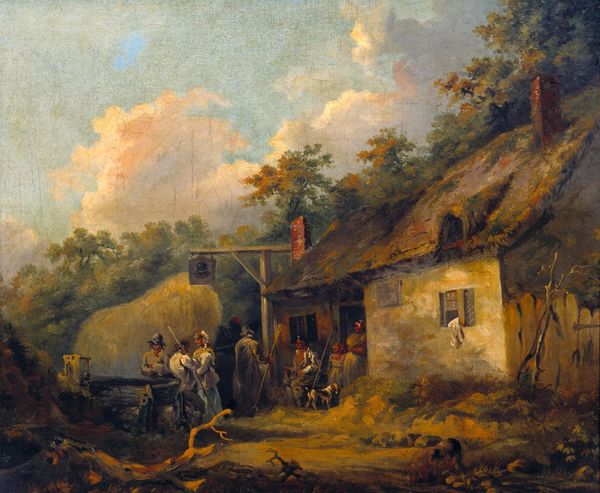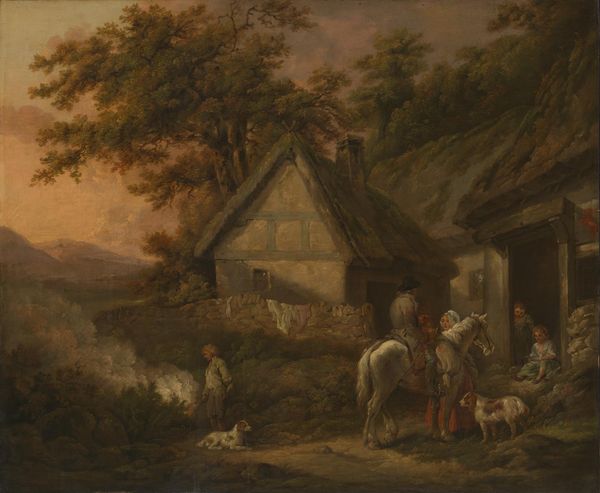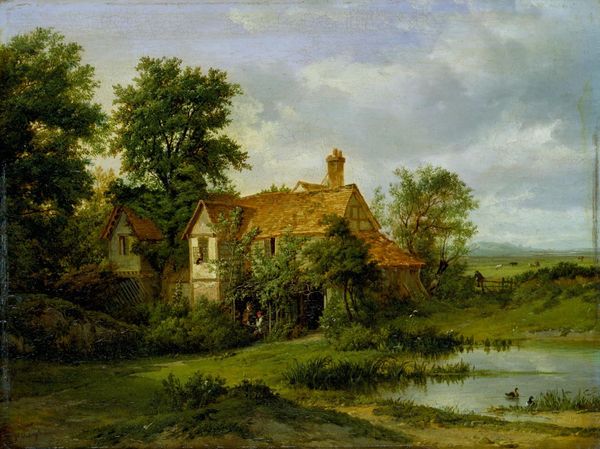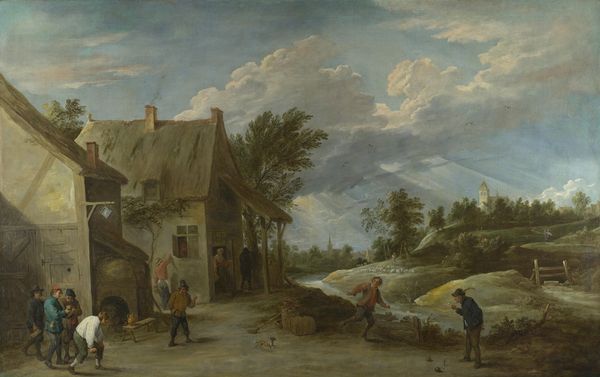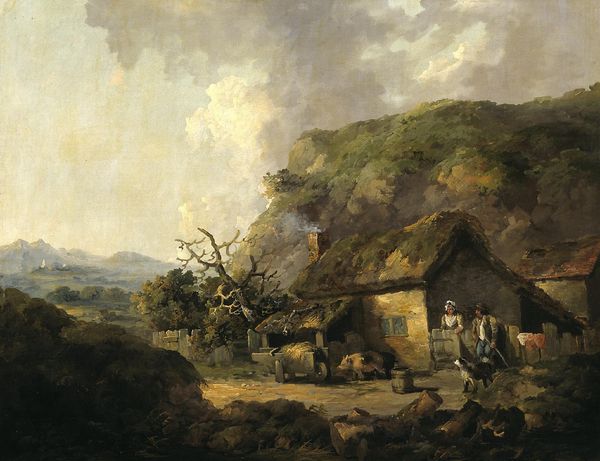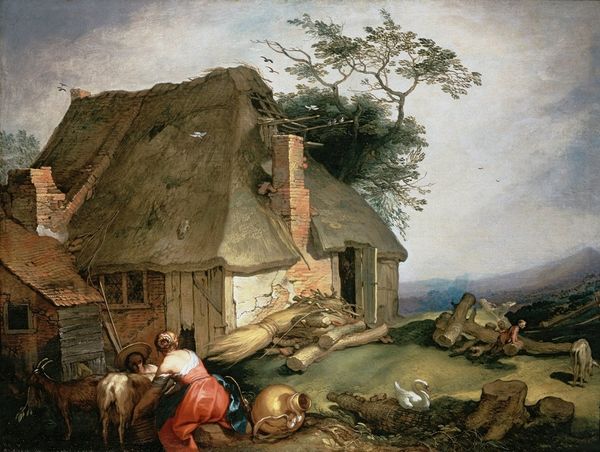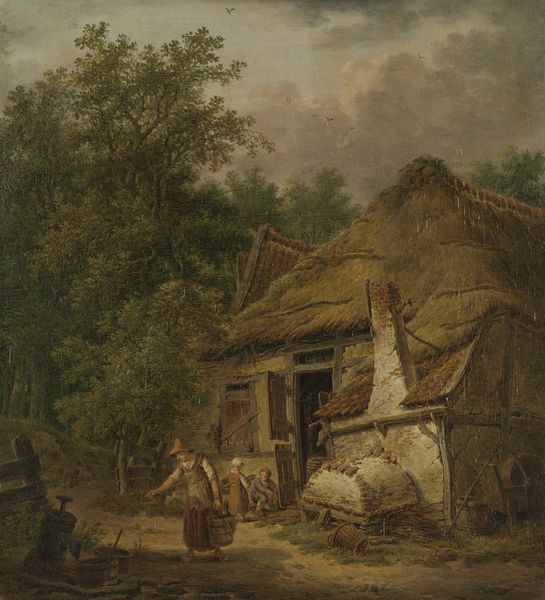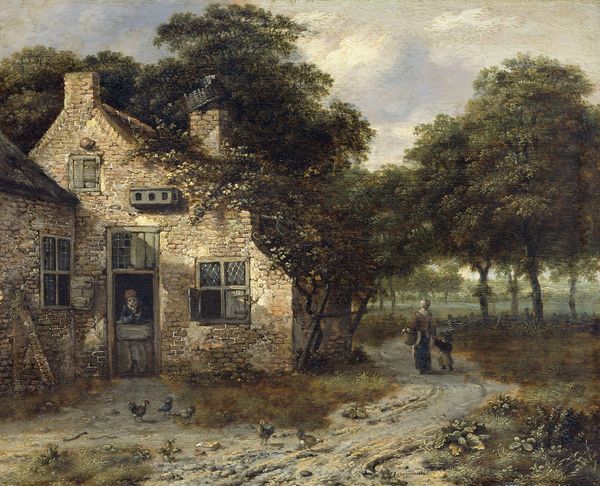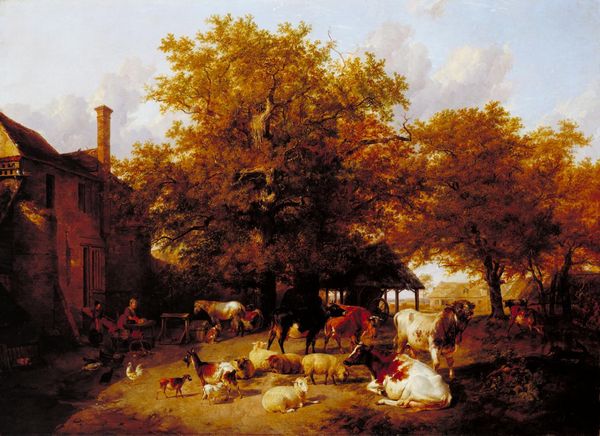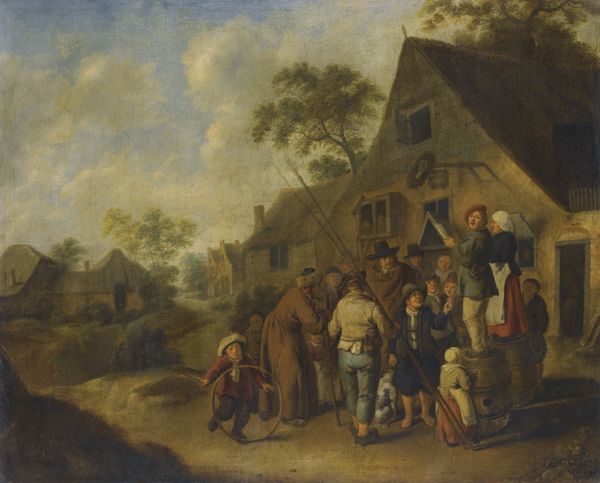
Copyright: Public Domain: Artvee
Curator: I find this scene immediately charming – so picturesque. It reminds me of stepping into a historical novel. Editor: The texture pulls me in first, actually. The rough rendering of the thatched roof and the almost haphazard placement of the figures makes me wonder about Morland's methods of production. What kind of pigments would have been accessible in the late 1780s to create these earth tones and suggest a working-class aesthetic? Curator: That's "The Bell Inn," painted by George Morland around that time, indeed. A classic genre scene capturing daily life. Inns held such a central place in communities and as a conduit for politics! Editor: The figures gathered outside—likely agricultural laborers, judging by their attire—certainly reflect the rural labor force of the time. Were these compositions planned meticulously, or did Morland capture these moments spontaneously? The depiction of the pig wallowing at the very bottom reinforces that close proximity of daily labor to domestic environments. It's pretty fascinating. Curator: Morland's career shows his relationship with wealthy patrons, some unscrupulous. These genre paintings are rife with contradictions: They glorify rural life, but are also consumed by an urban elite romanticizing the countryside. Note that it also suggests an interest in appealing to new art-buying public Editor: Right, the consumption aspect again. What were the conditions of Morland's practice, though? I'm intrigued by his handling of oil paint—the viscosity, the layering, how that contributes to the impression of a specific environment. Was he employing the established guild structure methods, or something a bit looser? His approach reflects a society undergoing significant transformations as the industrial revolution gathered pace, shifting modes of production and patronage of art. Curator: Certainly. And those societal shifts influenced tastes and art sales too. How different social classes imagined the “good life.” Morland unfortunately battled his own demons, too. The paintings project simplicity and happiness that he never really found in his own chaotic, debt-ridden existence. Editor: A bittersweet glimpse then, revealing both social and personal complexity. The way art, commerce, and society are often interconnected is always fascinating, right? Curator: It absolutely is. Looking closer today opened up different layers.
